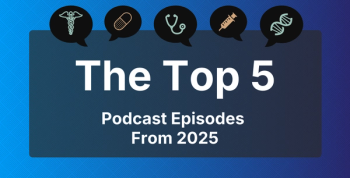
How a Mental Health Diagnosis Is Associated With Future ED Use
While mental health diagnosis can be associated with an increased use of emergency department (ED) visits, prior patient visit patterns were also associated with higher future ED use.
While mental health diagnosis can be associated with an increased use of emergency department (ED) visits, prior patient visit patterns were also associated with higher future ED use, according to
The researchers analyzed data on all patients who presented to the ED in California in 2012. A total of 3,446,338 patients were included in the study with a mean of 1.69 visits per patient per year. One-third of the patients (29.1%) had at least 1 mental health diagnosis.
“Given the potentially low efficacy of ED-based treatment for mental illness, identifying characteristics related to increased ED use among patients with mental illness is an important step toward improving their health care access, quality, and costs,” the authors explained.
Generally, patients with a mental health diagnosis had a higher visit volume compared with patients without a mental health diagnosis. Approximately 17% of all patients had 4 or more ED visits, but they made up almost 40% of all visits.
Mental health conditions were associated with the second largest increase in ED use, while diseases of the skin and subcutaneous tissue were associated with the largest increase. A mental health diagnosis in the previous year or an ED visit with a primary discharge diagnosis related to mental health were both associated with more ED visits in the follow year compared with patients who didn’t have a mental health diagnosis or patients who only had a secondary discharge diagnosis related to mental health.
The authors also examined how a mental health condition might interact with other factors and found the interaction effect was relatively small or negative. For patients who were hospitalized in the previous year, their mental health diagnosis was associated with 3.32 times as many ED visits in the future, but no mental health diagnosis was associated with 4.88 times as many visits in the following year for patients who were hospitalized in the prior year.
The only instances where mental health had an amplification effect was with injury and poisoning diagnoses, which were associated with an additional 1.13 times as many ED visits compared with only 0.98 times as many visits when there was no mental health diagnosis in cases of injury or poisoning.
“Certain classes of mental health diagnoses were associated with higher ED use,” the authors concluded. “The presence of a mental illness diagnosis did not appear to interact with other patient-level factors in a way that meaningfully altered associations with future ED use.”
Reference
Niedzwiecki MJ, Sharma PJ, Kanzaria HK, McConville S, Hsia RY. Factors associated with emergency department use by patients with and without mental health diagnoses. JAMA Network Open. 2018;1(6):e183528. doi:10.1001/jamanetworkopen.2018.3528.
Newsletter
Stay ahead of policy, cost, and value—subscribe to AJMC for expert insights at the intersection of clinical care and health economics.








































